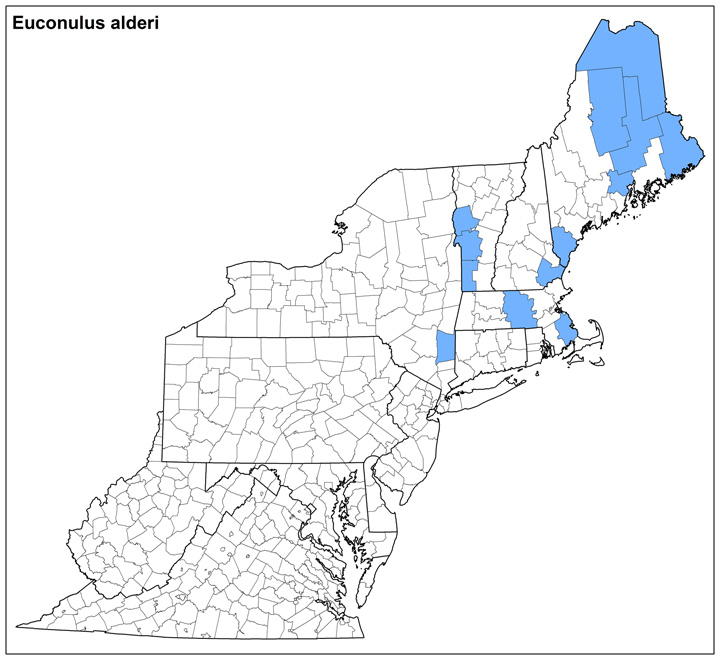Land Snails
Euconulus n. sp.
.jpg)
.jpg)
.jpg)
.jpg)
Photo(s): Shell of Euconulus n. sp. images © V. Horsáková and M.Horsák
Click photo(s) to enlarge.
Family: Euconulidae
Identification
Height: 1.9-2.1 mm
Width: 2.5-2.7 mm
Whorls: 5 whorls (adult shells)
This species is distinguished by its glossy dark red-brown shell and unique microsculpture. The protoconch is smooth to very weakly-marked; thread-like ribs on the upper shell surface are reduced-to-absent with spiral lines being as strong or stronger; and spiral grooves on the shell bottom are strong. The animal’s body is dark, with a mottled mantle.
Euconulus fulvus egena differs from Euconulus n. sp. by its yellowish silky shell, rounded body whorl, protoconch with strong ribs, stronger and sharper thread-like ribs across the entire upper shell surface, wider whorls, and pale animal body. Euconulus polygyratus differs by its dull yellowish shell, lack of spiral grooves on the shell bottom, narrower whorls, and pale animal body.
Euconulus n. sp. is genetically closest to E. alderi of Eurasia and the North American arctic and far-west. Morphologically, Euconulus alderi differs in its more rounded body whorl, more strongly marked protoconch, wider whorls and solid-colored mantle.
Taxonomy
This new species was first reported from North America as E. alderi from Iowa fens (Frest, 1990). It has been subsequently listed as either E. alderi or E. praticola (an incorrect name). While some differences in shell features with European material had been noted, recent mitochondrial and nuclear DNA sequencing established it to be a distinct species (unpublished data).
Interestingly, genetic sequence data also shows that the similarity in shells of E. n. sp. and E. alderi is due to a striking evolutionary convergence - with the two species having originated from different stocks. True E. alderi is a sibling species of E. f. fulvus, while E. n. sp. is a sibling of E. polygyratus. Formal description of this species is currently in progress.
Ecology
This new species is restricted to wetland sites that are open or wooded, as is E. alderi. It is particularly fond of shrub-carr, rich conifer swamps, and open sedge mats in fens. In former situations it may be found along with E. f. egena.
Distribution
This new species ranges across the eastern ¾ of North America, from Maine south to at least New York, Ohio, and Iowa and west to southern British Columbia. It lives south in the Rockies to at least southern Utah and northern New Mexico. It does not appear to extend north of the St. Lawrence in eastern Canada, nor beyond 50º N latitude in the interior.
While not yet recorded from the Canadian Maritime Provinces, E. n. sp. presumably occurs throughout New Brunswick and Nova Scotia. Similar looking shells from the far west (California & Nevada) and the North American arctic west of Hudson’s Bay represent true E. alderi.
Conservation
Because this species has not yet been described, it does not have a NatureServe Global Rank. Given its wide range, a “G5, Secure” ranking may be warranted. However, many of its fen populations are at risk from draining.
Jeff Nekola 3/2018
Range Map (click to enlarge)


